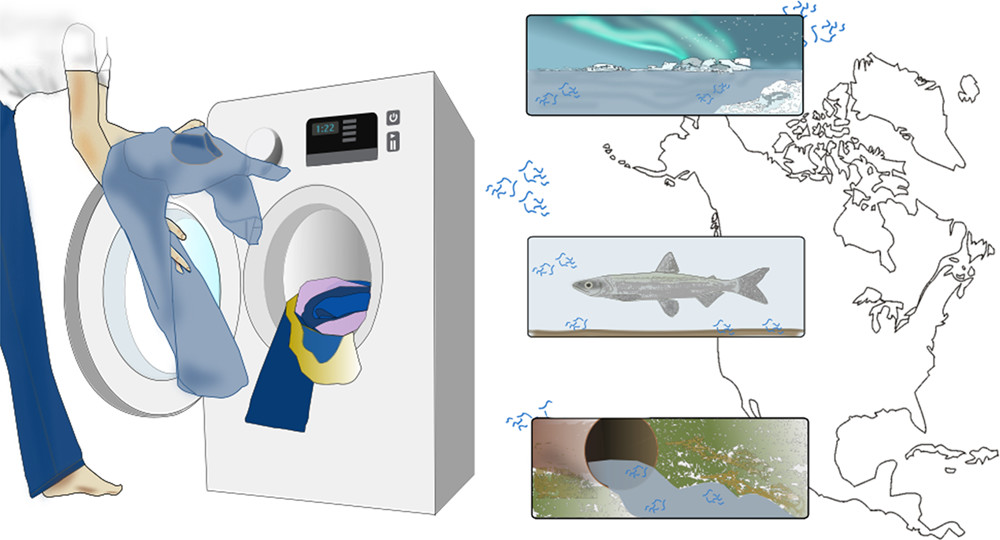Blue jean microfibers are leaving a footprint in the Arctic, new research finds
The fibers are durable enough to be transported to the Arctic from sources to the south.

Microfibers from blue jeans are widely found throughout the Canadian Arctic islands, says new research published on Sept. 2 in the American Chemical Society’s Environmental Science & Technology Letters.
A team of researchers from the University of Toronto concluded that blue jeans are yet another indicator of the widespread burden of human-made pollution in the Arctic.
That’s because blue jeans add “significantly to the environmental accumulation of microfibers from temperate to Arctic regions,” they said.
When you wash blue jeans, you probably think more about getting them clean than contaminating the environment.
But the researchers found that indigo denim microfibres accounted for up to 90 percent of human-made particles found in sediments in the Laurentian Great Lakes, along the United States-Canada border and in shallow, suburban lakes in southern Ontario.
Some rainbow smelt in the Great Lakes had also absorbed the microfibres.
Researchers spent time on board the CCGS Amundsen research icebreaker as it travelled throughout the Canadian Arctic, where they found indigo denim microfibers accounted for about 20 percent of all microfibers analyzed.
Denim microfibers were even prevalent in Arctic marine sediments collected at depths of about 1,500 meters, indicating that “these fibers are sufficiently persistent to undergo long-range transport from southerly source regions to accumulate in remote regions.”
Blue jean denim is made up of “natural cotton cellulose fibers, processed with synthetic indigo dye and other chemical additives to improve performance and durability,” the researchers said in their study.
As part of their study, they examined the footprint of these fibers by investigating their environmental distribution, their transport pathways and the sources of indigo denim microfibers shed by denim clothing.
It’s not a surprise that there are a lot of these microfibers around: The researchers found that a single pair of used jeans can release roughly 56,000 microfibers per wash cycle.
The average Canadian household washes 219 loads of laundry annually, they said.
So, assuming that each load contains one pair of used jeans, they estimated that the average Canadian household would release between 10 and 13 million indigo denim microfibers from washing blue jeans annually.
Despite the manufacturers’ recommendation of monthly washing, the average Canadian washes their jeans after wearing a pair twice, they said.
Overall, the researchers found these “natural” microfibers are often more abundant than synthetic microfibers in environmental samples.
“Thus, our findings expose a new front in the challenge of microfiber pollution, ‘natural’ fibres,” they said in their study.
“Here we show, for the first time, that blue jeans, the world’s most popular single garment, have a widespread geographic footprint in the form of microfibers in aquatic environments from temperate to Arctic regions.”
Solutions to curbing this Arctic contamination could include washing jeans less often or putting filters on washing machines.